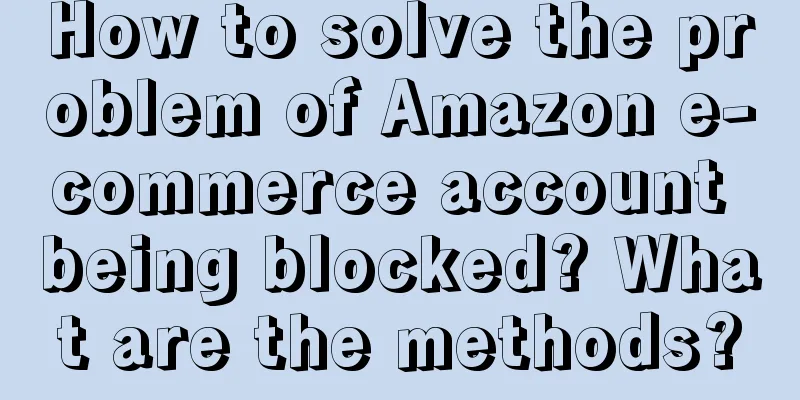Light IP, a complete guide from development to operation (Part 2)

In the previous article, we discussed how to make light IP popular? The next part will be sent out today. As the author of "Super IP Incubation Principles" and a brand IP incubator, in the second half of this article, we will continue to explain two other important issues in light IP creation:
It is divided into 6 key points and explained one by one. 1. How does IP become famous?Many people who create IPs hope to become famous overnight, but in fact, only a few can become popular right after they are launched, and this requires the right time, place, people and support. More often, it starts with natural growth... 1. Finding a market position through natural growthMost successful image IPs need a natural growth process before they become famous. This is like testing a new product. During constant exposure and launch, they adjust and optimize themselves and continue to accumulate early fans. This natural growth process, like the germination of life, is essential. In the end, a unique and impressive market position is found and it grows stronger. Of course, most images cannot survive this stage and disappear, and only a few can succeed. This is how the Fat Tiger IP developed. Uncle Fujima first created it in 2017, and after several years of incubation, it gradually attracted attention. Then in 2020, with the beginning of the epidemic, perhaps everyone stayed at home and read Weibo more, and one of the ink paintings, "Tiger Descending the Mountain", naturally became popular on Weibo. This encouraged the author to paint more popular ink paintings based on this image. Small plots began to appear in the paintings, emoticons were launched, and the character of Xiaohu was added. Everyone liked it. From Weibo to Xiaohongshu, to various brand marketing endorsements and derivatives, they were all very popular. With the arrival of the Year of the Tiger in 2021, it has become even more successful. In this four or five years of development, Fat Tiger has found its own unique and highly competitive market positioning: a cute tiger suitable for all ages and with spiritual connotation. As I mentioned in the previous article, Fat Tiger actually has the feeling of a big cat, which is very rare in the image of a tiger. A marketer who chose Fat Tiger for the 2021 Year of the Tiger collaboration told me: "Other tigers are either too serious and domineering, or too childish and immature, and are not suitable for the needs of the new consumer market. Only the Fat Tiger IP is both cute and not childish. It is rare to find such a cartoon tiger on the market that is suitable for both children and adults, and has sufficient spiritual connotations. This is almost unique, so we can only choose Fat Tiger for cooperation." Therefore, the market positioning of Fat Tiger is very interesting. It is comprehensive: it is family-friendly (there are big tigers and small tigers, which can impress and resonate with parents and children), and it has the pet feeling of a cat, which can impress and resonate with young people. This makes Fat Tiger have both family attributes and cute pet attributes. It can also be seen from the categories of the most popular derivatives of Fat Tiger that, according to Fat Tiger's IP agency, Qi Ce Di Chu Cultural and Creative Company, home furnishings, clothing, and toys are the best-selling categories of Fat Tiger. At the same time, due to its unique and powerful market positioning, it has also been favored by many first-class brands, such as Nestle, Glico, Procter & Gamble, and Valentino, all of which have launched products with the image of Fat Tiger. Let us broaden our horizons and look at other domestic IPs. For example, Wuhuang and Bazhahei, Mengya Bear, Xiao Liuya, Xiaolan and his friends, etc., all have unique market positioning. They are cute pets and have some distinctive attitude or proposition towards life. My Emperor is the opposite of Fat Tiger. He is a cat that looks more like a tiger. He is both a cute pet and a self-proud substitute; Mengya Bear represents the culture of healing + environmental health; Little Liu Duck represents a ruffian feeling and grassroots culture; Xiaolan and his friends represent a simple self-emotion + grassroots culture. From these IPs, we can see that the market positioning of IP, unlike product brands, must have distinct emotional attributes and the power of cultural growth. At the same time, IP is a living entity, not just a synonym for an object. This is the main difference between IP and brand. In short, finding one's own unique market positioning through natural growth is an indispensable process for the successful IP fame. In this natural growth process, there is no need to force things to happen, but to move forward in line with the natural feelings of the people and the creators. 2. Take advantage of the power of the times to thriveThe success of every IP image, in addition to being good itself, really requires a bit of luck to have a chance to explode and go viral. This luck does not come out of thin air. It means that there is a gene in the IP image and content that can combine with the general trend of the times and produce a chemical explosive effect. For example, Fat Tiger happens to be a tiger, so when the Year of the Tiger in 2022 came, he received a lot of cooperation and attention, and became a big hit. The rise of Sprout Bear is also related to the popularity of succulents (the inspiration for Sprout Bear is to turn succulents into cute bears) and the corresponding health and environmental protection craze. In two different articles last year, I mentioned the resurgence of Psyduck and the popularity of the green horse at the Gansu Museum, which happened to be related to the outburst of human nature and the popularity of green codes during the epidemic. The market influence caused by having the right times and not having the right times is very different. What exactly is the trend of the times? I think it is the change in the mentality of the times caused by the accumulation of people's hearts. When the accumulation of people's hearts reaches a certain critical point, the potential energy of the times will turn and swirl, which is most conducive to the emergence of new stars of the times. Therefore, the genes of an IP image really have to have something that just happens to be in line with the future trends, so that when the trend comes, it can naturally break out of the circle and become a phenomenal IP. The process before this is often very painful, but you have to persevere. As long as you can hold on until the right time comes, you will naturally have the opportunity to have an erection. How can we implant the genes that are likely to explode into the genes of IP images in advance? To be honest, this mainly depends on the endowment of the creator. The creator must be sharp, insightful, and even have a heart to benefit the world. Finally, let me summarize it in one simple sentence: "All successful IPs are survivors of the last wave and pioneers of the next wave." 2. How can IP continue to make money?People often hope that IP is a cash cow that can continuously generate money, but in reality most developers find that this is not the case. The reasons are: first, IP has its own life cycle, with ups and downs like the changing of seasons; second, even if the IP becomes famous, it may not be able to do well in commercialization. This requires transformation, turning a purely cultural thing into something with commercial value. As Qi Ce Di Chu Cultural and Creative Company, which operates IPs such as Fat Tiger and Little Liu Ya, said: the essence of licensing is business, one hand pays money and the other hand delivers goods, and the key is that the IP in your hand must be valuable enough for the buyer to be willing to pay. Below, we have sorted out four key points on how IP images can continue to make money: 1. Focus on market positioning, restraint and depthAs mentioned earlier, a successful IP must form its own market positioning, and in order to maintain this market positioning, it requires focus, restraint and depth. When Pop Mart became popular due to blind boxes, I asked Wang Ning: "When will you allow MOLLY and other IPs to develop the entire industry chain?" Wang Ning's answer was: "Be restrained, don't rush to make too many products, and make blind boxes perfect first." At that time, many brands wanted to cooperate with MOLLY, but Pop Mart only chose first-class brands to cooperate with. In the words of Pop Mart: "These brand collaborations are all advertisements used to improve the reputation of the IP. The real money still comes from its own products and store expansion." Using this method, Pop Mart gradually grew from a few million to tens of millions, and then to hundreds of millions and billions. During the critical years between becoming famous and not becoming famous, Devil Cat has always been relatively restrained in IP licensing, and only authorized and distributed co-branded products when products that were in line with its cool and trendy style appeared. The same is true for cultural and creative companies that have come up with a lot of ingenious ideas: "When an IP becomes popular, the choice of partner brands is very important. Various brands will come to you, so you have to choose carefully." "Because if the image is just a work, it doesn't matter, any brand will do, but if you want to develop it as an IP, then the market exposure and market channel characteristics are very important, which will determine the brand positioning impression of the IP." "For example, if the market positioning of an IP is an IP for adults or young people, but when taking on business, if there are many manufacturers of baby products and they pay a lot of money, then you will accept a lot of baby and child authorizations, then it is very likely that the original attributes of the IP will be lost, and the market positioning will be messed up." "Because, when an IP suddenly becomes popular, it is often accidental. Many brands will find you at the same time. If you are not careful in your selection, it will cause confusion. Especially when cooperating with some brands that do not particularly match the tone of the IP, it will definitely lead to confusion in the impression of the IP." In short, at this time, IP is actually developing into a brand, and a brand must have market focus and mental segmentation. At this time, we must establish a clear positioning, focus on it, learn to be restrained in cooperation, go deep in development, and continuously develop products and cooperation that best suit the IP market positioning. Only in this way can people's commercial impression of this IP become deeper and deeper, and know in which product areas this IP performs best and most outstandingly. Only in this way can lasting and repeated consumption and word-of-mouth communication be formed. 2. Culture and business go hand in handThe essence of IP is culture and human heart. Therefore, in the process of IP commercialization, an important secret to success is: don’t make it too commercial, but also make sure to build content and culture at the same time and maintain high quality of content. This is the simultaneous advancement of culture and business, and is an indispensable part of IP work. In the operation of Fat Tiger, great emphasis is placed on advancing on two fronts. First of all, the entire commercialization process is synchronized with the original creation of the author, Uncle Ma, who continuously creates good works based on the image of Fat Tiger, and these works do not have to be very commercial. At the same time, commercial design and original content are separated, with commercial things being commercial and content being content. Secondly, in order to fully respect the original creation, the author has a veto over any commercial cooperation of Fat Tiger. As long as the author feels it is not good, we will not do it. Third, when the IP is exposed in various ways, whether in products or marketing, or in offline exhibitions, such as art exhibitions, IP licensing exhibitions, etc., it always gives customers and the public a feeling that we are always serious about content creation and maintaining high-quality content output. "This way, people won't feel like they are just eating for free." (Original words from the CEO of Fat Tiger's company) Of course, there is another situation, which is to respond to changes in market demand. If during the development process, it is found that commercial products and cooperation are moving in a different direction from the original direction, then the IP team must make a choice: to follow this changing direction, or to stick to the original one? At this time, if the team is strong enough, the entire IP can be transformed in a new direction, and the image development can be guided by market demand. But this will also involve certain risks. It is possible that the original creators and team are not suitable for this change. At this time, it may be correct to stick to the original direction. In short, it all depends on people. It is people’s quality and taste that determine everything about IP development. 3. Build a good cultural and commercial systemThere is a cultural business system for making money from IP. We have integrated the development of various IPs and briefly described them below. First of all, from the perspective of external output, there is the output of original content, including image paintings, small comics with a sense of story, emoticons, MEME pictures, etc.; there are also various semi-cultural and semi-commercial exposures, from self-media content to various IP licensing exhibitions, and various art exhibitions; and then there are the more commercial, TO C brand product joint sales, sales for brand endorsements, etc. What supports the external output from content to business is an internal IP cultural business system, including: 1. The original creators continue to work hard and accumulate fans and even communities; 2. The operating company should have a design middle platform, which is mainly responsible for the commercial needs of the market. But it will not interfere with content creation or what the copyright holder should do. In design, its main task is to organize the commercial material library of this IP. Regularly or according to business feedback, design various suitable commercial content. Therefore, the design middle platform is separate from the original author, and each performs its own duties. 3. The operating company must also have planning capabilities. If the company is a one-stop shop, the brand may not be able to think of how to combine with the IP? Or why does the brand want to use this IP? Then the operating company needs to do some project planning and demo in advance. The operating company needs to write a relatively brief but comprehensive plan: including how can we cooperate with your marketing? What marketing actions might you take? What can we do? What new product lines can the brand cooperate with the IP, and how can the IP image be created on this? In terms of publicity, how can the media resources of each other cooperate to help increase the volume of the brand? It also includes how the fans of the IP can become the new wave of customers of the brand? And so on. There is also a very interesting trick, which is that when IP develops products, it is necessary to separate products that are purely for fans from popular products that sell well to the general public. How to understand it? Let’s take Fat Tiger as an example. There are two different positionings for the self-operated products and licensed products of Fat Tiger IP: One is the peripheral products that completely serve fans. These are mainly in their own official stores. Basically, the official stores will make all kinds of products. As long as the fans want them or the products are highly demanded by the fan group, they will make them. Therefore, the main products in the self-operated e-commerce stores are to serve fans, which appear to be dazzling and rich in variety. The other type is mass-market products for the general public. Generally speaking, there are fewer categories but large quantities. These are products that have been tested by the market and will be produced, distributed and promoted on a large scale. In the latter type, it is largely due to the demand for IP products from offline channels, which requires product development based on the characteristics of the channels. For example, various sundry stores, trendy toy stores, etc. Operators must develop products specifically based on the characteristics of these channels and the people in the channels, so as to continuously attract more channels for sales. There is another situation, that is, the product development cost is relatively high, such as blind boxes, or the technical barriers are relatively high, such as some technological technology products and toys. These are mainly authorized and produced and sold by authorized manufacturers because they are more professional. The above is the cultural + commercial operation system of IP. Cultural creation should do cultural creation well, and commercial should do commercial work and product development and sales well. The two complement each other. Relatively speaking, the simpler the cultural creation is, the better; the more self-created it is, the more powerful it is; whereas for commercial development, the richer the better; the more it conforms to market demand, the more popular it will be. The two have different logics, so they must be separated. Therefore, we found that one of the best IP operation models is the cooperation between the original author and the brokerage operation company, such as the MOLLY author and Pop Mart, the Fat Tiger author, Xiao Liuya author and Qi Ce Die Chu, which are all separate and combined. 4. Industrialized IP production also has valueIn the words of Qicediechu Culture and Creative Company: "The essence of IP operation is still business, that is, a business where you pay for goods and then get them. The key is to see what the market needs." Therefore, not only big IPs, popular and well-known IPs are valuable, but some small IPs that meet the needs of market manufacturers are also valuable and can be sold. Ingenious ideas have been put forward to call this type of light IP image industrialized IP production. What is industrialized IP production? It is to meet the needs of the market and produce various lightweight images that meet the needs of manufacturers and sales in batches and on a large scale, with a little content as an auxiliary, mainly through cooperation with manufacturers to complete the design, production and sales. Because manufacturers do not necessarily need a big IP, they often just need a pleasant image to put on the product, and they find that this will make it easier to sell. In this way, as long as the IP operating company can continue to develop a light image that meets this demand, it can obtain a lot of cooperation, which adds up to a considerable income. Taking the company Qi Ce Di Chu as an example, the income from industrialized light IPs can account for 50-60% of its annual income, while the income from big IPs like Fat Tiger only accounts for 30-40%. Therefore, from a business perspective, industrialized light IP production is a stable way to make money. The operating company only needs to build a content design team of 3 or 4 people to produce industrialized light IP, and then continue to cooperate with manufacturers at low licensing fees. In short, the IP operation company provides the buyer with what he needs. If the manufacturer just needs a very good-looking image on the product, and you happen to have developed such an image, you can sell it to him through IP licensing, or you can do special design customization. These industrialized light IPs are often not well-known and have never exploded or gone viral, but they can still achieve good sales even if they appear in a large number of various products. Also, because the licensing fees are low, manufacturers are also easy to accept. In fact, this approach has already been used by Sanrio, the parent company of HELLO KITTY. Sanrio produces a large number of light IP images every year and launches them on the market in a massive manner. Among them, of course, super IPs such as KITTY cat are produced, but the commercial capabilities of many other small IPs combined should not be underestimated. Sanrio's vast array of light IP images Culture and preferences are bound to be subjective, especially in China where the consumer base is so large. As long as your product exceeds the average market aesthetic level, adds a concept, and finds market positioning, it may be a small success, or a big success. Therefore, industrialized light IP and big IP each have their own market position. So, back to the original topic of how to make people like the light IP image, first you have to judge whether you have seen something that exceeds your usual average cognition. If so, then this image is likely to be liked by many people. As the saying goes, one person's heart is the heart of thousands of people. If you really like it from the bottom of your heart, naturally many people will like it too. On the other hand, IP needs a unique label, which is the unique market position and mental positioning I mentioned above. Manufacturers need this light IP label to highlight the characteristics of their products, and consumers also need this label to show their own personality. Therefore, as long as light IP has a distinct, unique and attractive label, it can survive, develop and make money. This is also the reason why the market logic of industrialized light IP production is established. ConclusionThree major issues:
01 is the issue of creativity and content, 02 is the issue of promotion and dissemination, and 03 is the issue of operation and making money. These three issues constitute the closed loop of IP development. Ten key points:
The above 10 points elaborate on the answers to the three major questions. Since then, a complete guide to light IP from development to operation has been completed. This is a summary of our team after carefully observing the successes and failures of nearly 100 light IPs in the past month. We also conducted in-depth interviews and visits to some excellent light IP operation companies, especially those with many ingenious strategies, and gained a lot of valuable insights, which are all reflected in the article. Author: Chen Gray Source: WeChat public account "IP Fried Rice (ID: 1054402)" |
>>: "I will never tell you" There is also such a password to increase fans
Recommend
What are the best things to sell on Amazon for Christmas? What are the options?
Cross-border e-commerce platforms like Amazon natu...
Cross-border e-commerce reaches a "new starting point"
As global e-commerce competition becomes increasin...
What is the average conversion rate for Amazon ads? What is a good conversion rate?
As the Amazon platform continues to grow, more and...
A must-have guide for TikTok marketing: Learn about Big Data Engine in one article
Do you feel lost and helpless on the road of Douyi...
Big model price cuts, a war with no winners
In just one week, large models have entered the &q...
Luckin Coffee, the undisputed king of CNY marketing volume
The Year of the Dragon is approaching. This articl...
Uncovering the secrets of short play script trading: 90% of them are rejected in the first review, and the popular screenwriters earn 100,000 yuan a month
While short plays are popular, the script transact...
How is the starday platform? What are its advantages?
As the world's third largest economy, Japan ha...
Car company bosses compete to become Internet celebrities
Lei Jun alone is as good as ten 4A advertising com...
Freemium vs Free Trail: Which one has better business growth?
When deciding on a product's business model, w...
Should entrepreneurs become internet celebrities?
In today's age where traffic is king, whether ...
With 2.5 billion topic views, how did "Wumeizijiang" brainwash the entire network?
Recently, I believe that you who watch videos have...
In this Olympic marketing, who is more cunning, Yili or Mengniu?
On the marketing stage of the Paris Olympics, the ...
How much does it cost to transfer an Amazon store? What should I pay attention to?
It is quite common to transfer a store on Amazon. ...
For Xiaohongshu, the 5A model is much more useful than the AIPS model
In the marketing ecosystem of Xiaohongshu, how can...









